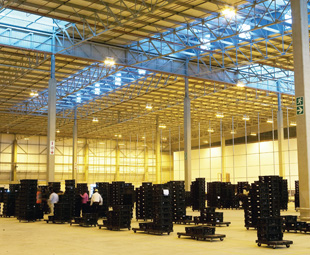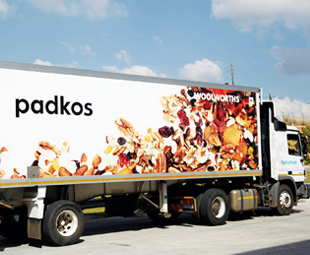Delivering the bare necessities

The law of supply and demand is an absolute constant in everyday life. We see something we like and we buy it. After a while, the stock runs out and it needs replenishing. Sounds easy enough, but what about the company charged with keeping the shelves stocked, so we can have our daily dose of retail therapy? GERHARD HORN takes a look behind the scenes.
Actually, it’s a bit more complicated than that. Retail therapy implies the acquisition of goods that we don’t necessarily need to sustain us. To keep a family up and running, you need to feed them with the bare necessities of life. You know – bread, milk, eggs and so on.
The food and beverage (F&B) distribution industry is one that never sleeps. It’s a 24/7 industry. The F&B service has no room for inefficiencies and downtime. A single breakdown could end up costing the company thousands, maybe even millions of rands.
In examining this phenomenal industry and the various elements that keep it running smoothly it might be possible to learn some lessons from which other transport sectors could benefit.
 One can’t discuss this sector without looking at Woolworths’ new distribution centre (DC) in Midrand. This is a building that will blow your mind with its size, distribution capabilities, effectiveness and all-round environmental friendliness.
One can’t discuss this sector without looking at Woolworths’ new distribution centre (DC) in Midrand. This is a building that will blow your mind with its size, distribution capabilities, effectiveness and all-round environmental friendliness.
The DC facility, also know as the Midrand Campus, was built to sustain the company’s daily distribution efforts and to serve the aggressive demand for more Woolworths outlets around the country. Each store receives deliveries on a daily basis so the decision was made to spend R500 million on a 78 000 m2 colossus.
In some ways, size does matter, but location is more important to Woolies. The Midrand Campus was chosen for two very specific reasons: it’s the most cost-effective location for the company’s transportation of goods, and allows the company to implement its strategy of limiting the impact on the environment.
Woolworths is looking to reduce its food miles. This is the distance a truck needs to travel to deliver products to each outlet. By containing this distance, fuel costs, energy consumption and therefore harmful CO2 emissions are reduced. The Midrand site has resulted in a significant reduction in average kilometres travelled to outlets.
The DC, the largest of its kind in South Africa, is as impressive as it is massive. It was built to centralise the work of five different distribution centres. Normally a truck would have to find its way to the various distribution centres to collect goods for delivery to the many Woolies outlets. The dairy products, for example, were not stored at the same location as the dry consumables.
This now means that a single visit to the DC will enable a truck to collect absolutely everything needed for its daily deliveries. As you can probably imagine, even this is a logistical nightmare. Around 800 trucks visit the facility daily with around 100 000 product trays needing to be delivered. The 120 dock-leveller doors and the smart design mean the total turnaround of traffic is managed in 75 minutes.
 Woolworths is currently instituting a programme using truck bodies designed with multiple self-contained sections. This allows for the carrying of a variety of goods – for example frozen foods, ambient temperature products, clothing and household goods – all in one load. This will allow for one truck to deliver multiple product items to one or more outlets on its daily route.
Woolworths is currently instituting a programme using truck bodies designed with multiple self-contained sections. This allows for the carrying of a variety of goods – for example frozen foods, ambient temperature products, clothing and household goods – all in one load. This will allow for one truck to deliver multiple product items to one or more outlets on its daily route.
What can other sectors learn from this? Quite simply – simplify. Woolworths has simplified its distribution network by centralising all products under one roof for easy fetch and carry. Not only does this cut delivery costs and turnaround, but also the entire system is kinder to the environment. It’s a case of Woolworths having a big piece of cake and the luxury of delving into it without feeling guilty. Moreover, it’s a Woolies cake, so you know it’s going to taste great…
Woolworths has set a great example by investing in South Africa. Even more than that, the company has invested in keeping South Africa green. The food and beverage industry may be tough, but with enough determination, a willingness to put your money where your mouth is and a good idea, it can become no more complex than any other form of transport.
Published by
Focus on Transport
focusmagsa




